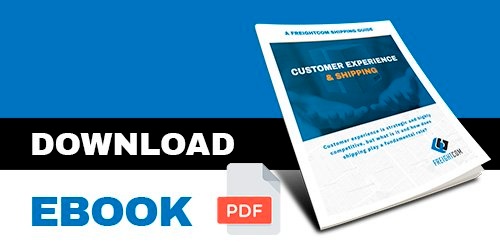Are you the owner or logistics manager of an eCommerce business? If so, you’ll know just how important shipping is to the success of your business.
Whether you’re shipping products around the world, or shipping them across Canada or the US, one of the biggest concerns you should have is keeping your products safe. Damaged and spoiled products will end up getting returned - wasting your company money, time, and resulting in lost profits and lost customers.
To avoid unexpected returns and disappointed customers, your business must ensure that it takes the necessary steps to prevent products from damage in the shipping process.
Don’t know where to start? Freightcom has listed four tips that will help get your products where they need to go, while reducing the risk of damage along the way.
1 - Choose the right shipping box / packaging
It sounds obvious, but choosing the right shipping packaging really is the key to preventing your product from being damaged in transit. Fragile items should be stored in a packing box with snug protective internal padding, while non-breakable products may be fine with a lighter loose material. Depending on your product packaging you may need to think about whether a box or unpackaged product could get scuffed or dented within your shipping box.
There are three main types of shipping packaging:
- Corrugated box: Corrugated boxes come in varying levels of protection, known as either single, double or triple-wall. Single-wall boxes are best suited for non-fragile items while double-wall or triple-wall boxes should be used with heavier orders. Box manufacturers provide ECT (edge crush test) ratings, dimensions, and burst or gross weight ratings to help select the right shipping box.
- Jiffy bag: Best suited for smaller and non-fragile items. Jiffy bags are padded envelopes used for packaging products for shipment. Choices include rigid mailers and other bubble lined and padded packaging.
- Polybag: Offering a similar level of protection to jiffy bags, polybags offer excellent water resistance, but no structural strength. They are often used to protect items that are already boxed.
2 - Do you need inner protection?
Packages are often damaged when they are dropped, from the vibration of conveyor belts and trucks, or because of temperature and humidity changes. This is why it’s always a good idea to use inner protection inside your packages.
Materials such as bubble wrap, brown paper and single-ply corrugated roll can all offer varying levels of impact protection, while other items such as air cushions will help fill space voids and prevent your items from rolling around.
3 - Make sure your boxes / packages are sealed correctly
By using a higher-quality of tape and making sure you seal up your boxes correctly, you can create a further layer of protection for your products while they are being shipped. Shipping tape uses what is called ‘hot-melt’ adhesive, and ranges in mil dimensions: the higher the number the stronger the tape.
Filament or strapping tape can contain fibreglass strands and also comes in a variety of grades based on the weight they are rated for; 100-lbs is considered general-purpose while 380 lb strapping tape is for must hold heavy shipping containers.
Another option is water-activated gummed paper tape, which requires it to be applied wet with a dispenser or sponge. This creates a permanent bond with the box that actually strengthens the box. It’s great for heavier items but it is potentially messier to apply.
4 - Stay clear from oversized boxes
Just as important as choosing the right shipping box, it’s incredibly crucial that you don’t select a box that is too large for your product. Having too much room around your product can leave it susceptible to damage or moving around during shipping.
Ideally, you want your product to fill the space within the box avoiding as much air-space as possible - but remember to allow extra room for cushioning if it’s needed for fragile objects.
If your business sells multiple products, it’s important to have a variety of different sized boxes available in your logistics department. This will ensure that you always have an appropriate box for any product or product combinations.
Ideally you are looking for the minimum box size that provides low risk for shipping damage.
The next step is to choose the right courier service
Once you have successfully packaged your item, finding the right courier service will be your next step - and Freightcom can help.
Through the use of game-changing technology, we can help your business to choose from select carriers that are perfectly suited to your needs while helping you to receive beneficial rate structures at the same time.
Ready to learn more? Contact Freightcom today for more information.

.png?width=250&height=58&name=MicrosoftTeams-image%20(28).png)